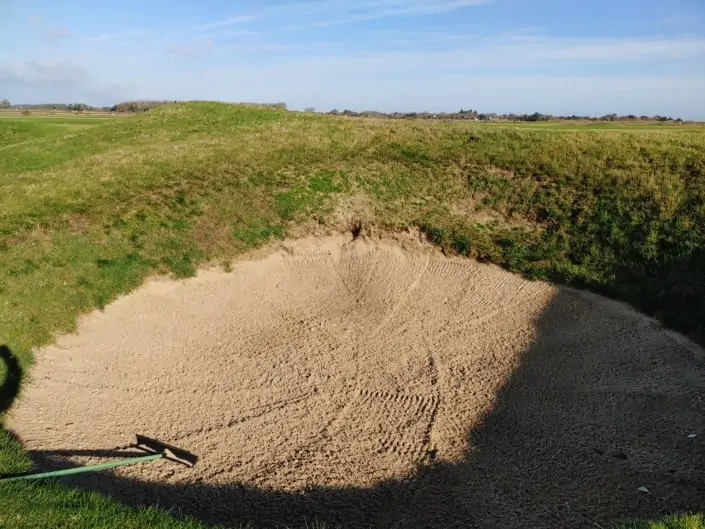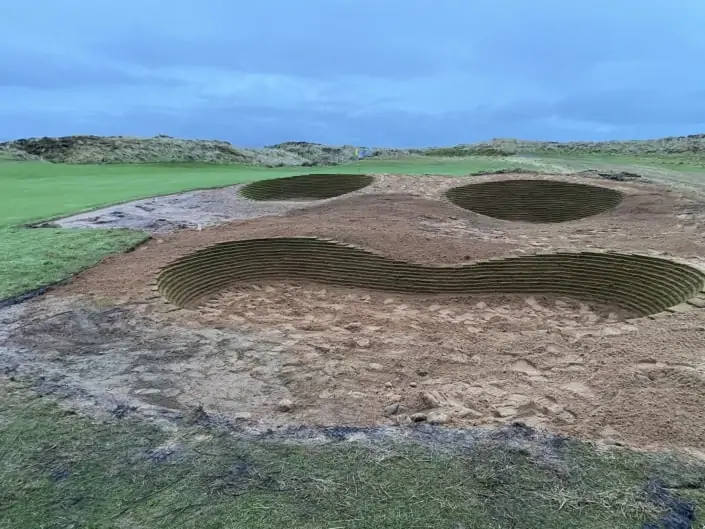Does Ecobunker solve the problem of bunker erosion in the Gulf?
The wind, the water, the erosion – unsightly high bunker edges are an issue that golf courses are increasingly struggling with. With increasing heavy rainfall, but at the same time longer dry periods, bunkers are increasingly suffering from erosion on the one hand, but also from dried out edges on the other. The answer to this is increasingly sought in artificial turf sods, which have now also found a following in German-speaking countries.
“We implemented this at the Valley golf course, which in Upper Bavaria repeatedly suffers from extreme weather,” says Andreas Matzner, greenkeeper at GC Starnberg in the Bavarian Golf Association. He also advises other German golf courses and is enthusiastic about the artificial sods that are stacked on top of each other on the bunker edges. In the case of Valley, the choice was made for the supplier Ecobunker, which is currently the market leader in Europe for artificial sods for bunkers. “A real severe weather event at a facility like Valley puts me about 160 man-hours on repairs as a result. With the Ecobunkers, we saved about a geenkeeper day here,” Matzner explains the advantage.
Significant labor savings – but artificial optics
Like Matzner, his colleague Daniel Lüttgers, greenkeeper at GC St. Leon-Rot in the Baden-Württemberg Golf Association, is particularly impressed by the topic of saving work. “We introduced the Ecobunkers when we built our Wedge-o-Drome in 2017. Since then we have been extremely happy with it. We need to clean them from weeds and dandelions once a year. We do that with the hot water jet. But all in all, the maintenance effort is really low and it doesn’t look that bad either.” The layered artificial turf sods also look good with the huge practice bunker on the Wedge-o-Drome (picture below), which is reminiscent of Scottish specimens due to its high edges.
In fact, ecobunkers are often reminiscent of classic British pot bunkers. The high edges of these bunkers, which normally have to be laboriously built by the greenkeepers with turf tiles and have to be renewed regularly, are now made up of artificial turf tiles. They usually come from discarded hockey fields or other sports fields that are being renovated or closed. However, their durability is significantly longer and is designed for several decades. In addition, the artificial turf is far less susceptible to rain and water. Anyone who gets closer to the bunker, with a little experience in greenkeeping , will recognize that it is an artificial product that, unlike natural lawn tiles, of course does not degrade itself and is partly built in with the help of concrete.
For many users, however, the advantages outweigh the disadvantages, especially on pitches that have a typical links character: Significantly less work, thus lower costs and less water consumption, because the bunker edges no longer have to be watered.












